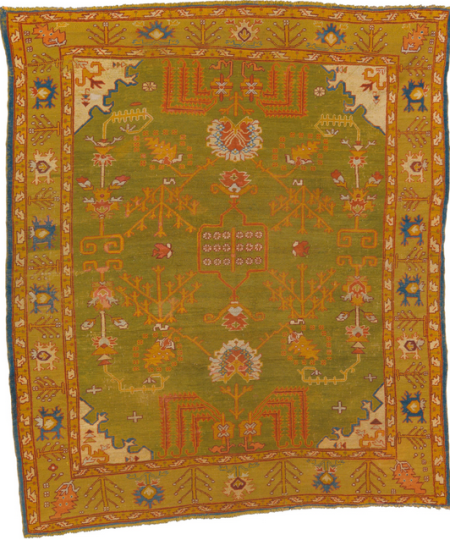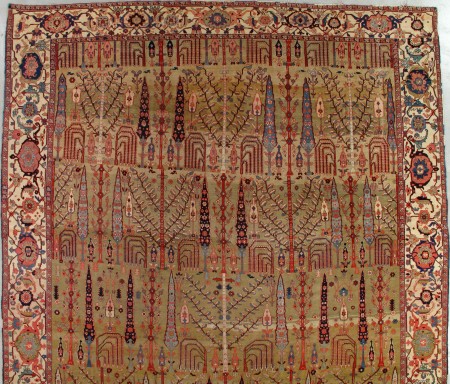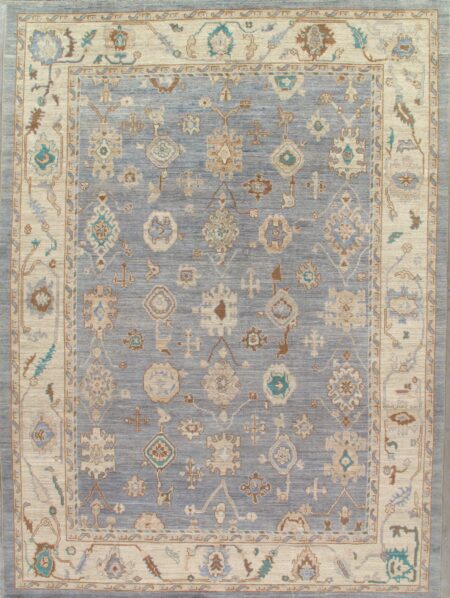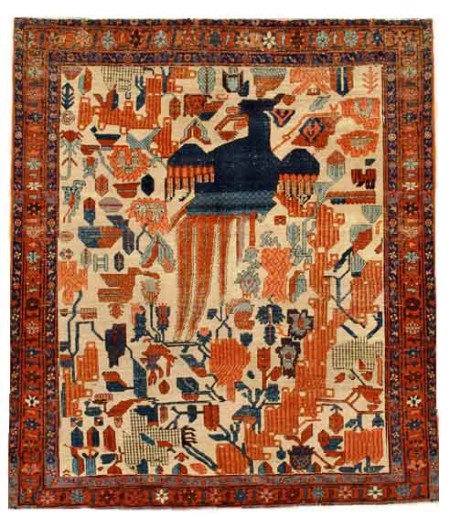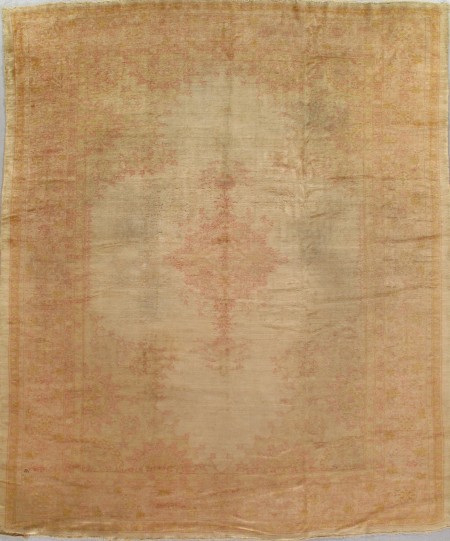Antique Ningshia ChineseCarpet-130102
| Design No.: | 130102 |
| Product Status: | In Stock |
| Construction: | Handmade |
| Materials: | Wool |
| Style: | Allover |
| Circa: | 1650 |
| Available Sizes: | X |
Call Today to Place an Order or If you have any Questions about Antique Ningshia ChineseCarpet-130102 by phone:(212) 889-3326 or email:14rugs@gmail.com
Ningshia(Ningxia) carpet
Western China, Ningshia province Date: mid 17 century.
Structure:
Warp: cotton, ivory, natural,Z -4-S, tightly handspun,
Weft: cotton, ivory, natural, Z.7. unplied or winder plied; thick and soft with highly irregular strands,handspun,2 shoots equally alternating.
Pile; Persian (asymmetric) knots, open left, no alternate warp depression, count, horizontal 6.5 inch
Vertical 6/inch=39/ square inch. Knot halves vertically displaced on back; knots and wefts equally prominent.
Finishes; none original, all edges cut;
Colors: gold (faded from red), dark blue, medium blue, tan, dark brown.
The dark brown is deeply corroded and partially lost, especially in the plain outer border characteristic of Chinese rugs of this period. The gold is corrodedbelow the blue.
Description and remarks:
The gold field displays a close dark blue swastika and T-fret overall lattice pattern with an overlay of bats in gold with a scattered few in medium blue. Although the bats lack internal details, they are recognizable and not wholly stylized. The wings are curved at the tops and end in lower points. This feature does not appear on all examples of this style and period; often the wings are vertically symmetric (e.g. MetropolitanMuseum of Art, New York,08.248.3). The bats all fly in the same direction. The bats are slightly more than two T-fret pattern units apart horizontally unlike other rugs where they are closer together at one pattern unit or even less. This gives a more cluttered appearance than in the present example. Here the field pattern clearly passes beneath the bats, where as it is interrupted by them, as if as the same level, in other (e.g.,08.248.3). The larger size of the carpet gives the fretwork a more delicate, less heavy appearance. Although wider in the field than the Metropolitan Museum of Art, New York example, here there are only five bats across, rather than, the six, again giving the appearance of lightness. Superior drawing of the present example argues for a dating at the middle of century.
The gold main border displays dark blue swastikas joined directly to the edging dark blue lines whereas in the other rugs the swastikas are gold embedded in a dark blue ground, thus giving a busier and heavier effect. In a present example, the narrow border is light and agile. The equally wide inner border has a pattern of half octagons each enclosing a rosette. The swastika and half octagon combination appears on several 17th century rugs: for example, a fragmentary piece from a private London collection: The Michaud peony and rosette very (GanzHimmelsohn , no.)
In this rug the gold ground swastika border is slightly wider than inner, and more complex than on our example. Although much corroded and partially lost the outer brown strip has survived in enough places to give the original lateral dimension. In many early pieces, the brown strip has simply been removed (as in 08.248.3). The end loss is thus all the more unfortunate.
Despite the condition issues the rug is unrestored and original. This hitherto unrecorded Ninghisia carpet stands out for its crisp, definitive drawing and careful execution. The rarity of early Kang Hsi carpets has long been noted and this is a worthy addition to the corpus.
Provenance:
Purchase in China by an American Missionary in the early 20 century; by descent to the a New England collection.










